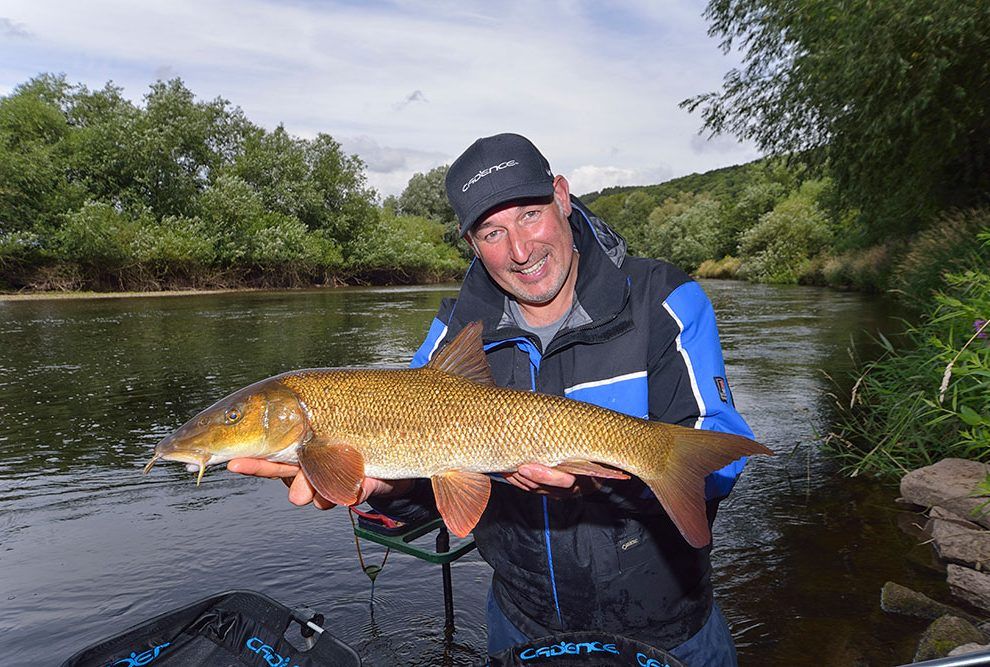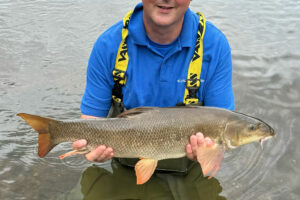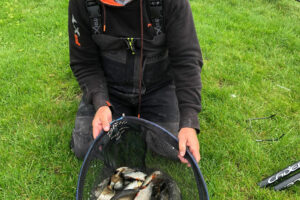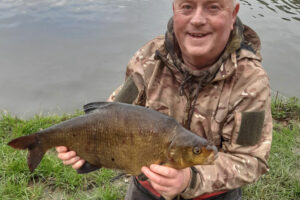“Now then ya loon!” – This greeting could have come from anyone, there is no doubt about it, I’m a loon in the first degree. This time it was an old fishing and drinking friend James Robbins.
“Keith I’m starting up a new brand in the UK” said James, “and I want you to cast an eye over it and be a brand ambassador, are you interested?”
James went on to tell me a few things about the business model and one thing struck a chord instantly, for every purchase over £50 a starter pole would be donated to get kids back on the bank. Now this is something fishing has needed for years, so I’d heard enough. “I’m in” – “great” said James and we quickly arranged a day on the river Wye so I could have a look at the new tackle.
I drove down like Sterling Moss (in a camper van) and soon enough James was walking me down the banks of the most beautiful stretch of river I’d ever seen. Sweeping bends upstream and down, tree lined and all lit up with a perfect sky, this was going to be special, I could see it.
“This is a nice peg” said my host, his smile said it was nicer than that and I pulled on my waders and got comfy.
It was quick, deep at my feet, on the inside of a bend. I could see the main force of the river was just a rod length out and I couldn’t wait to get amongst it.
“Have a go with this”, James passed me his Cadence CR10 #2 16ft Match Rod, this was coupled with a new Cadence fixed spool reel, the CS10 4000. This had some 5lb DH mainline on it which James said was bang on for the job. Looking at the pace and depth I hoped he was right.
I set up a 5 gram bolo with a simple double bulk and a 0.17mm hook length to a strong crystal bend 14 hook. I was ready, James suggested I start on bread as it can often get an instant response. Dropping the gear in and running it down the peg I imagined the contours of the rocky bottom and after a few shallow runs down, I put some more depth on and explored the peg.
Feeding now with maggot and a few bits of 8mm meat, the float buried and after a steady strike, I heard that sound “Fluuuuumm”. Now, there are few more wonderful noises in fishing than the connecting strike with a big stick, it’s like nothing else, a pre-curser of a battle, and battle it was. I held the rod low and took a first look at the action of the rod. It arched faultlessly through the tip and into the middle section, blending into a powerful lower mid and butt, just perfect.
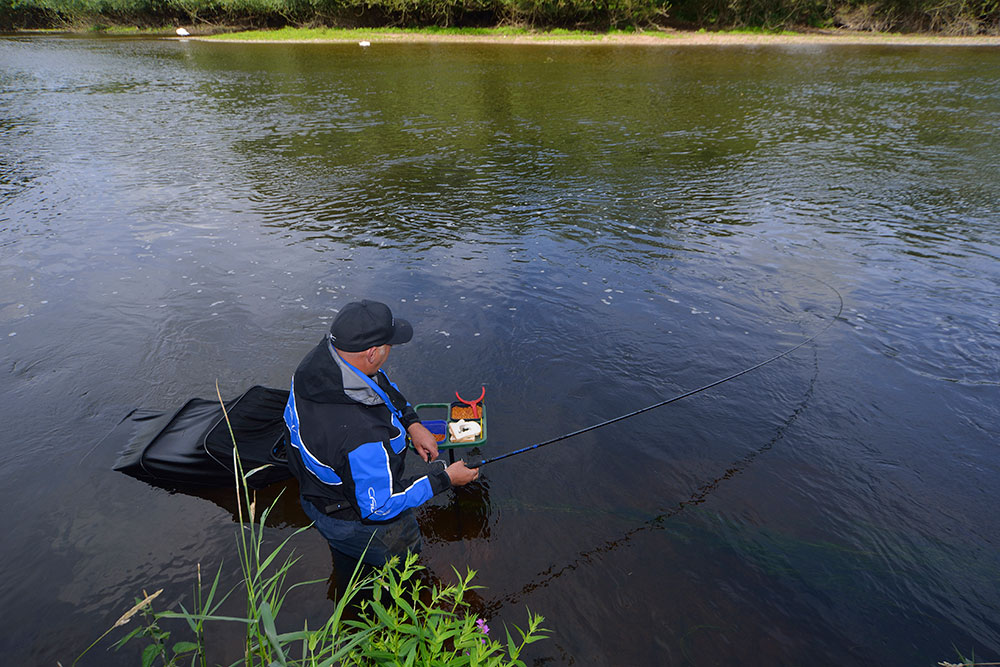
I flicked the bail arm over manually and took a turn. Immediately I was impressed by the way the reel felt rigid on the reel seat as I began to apply proper pressure, no sign of any body flexing that can muddy the feel through the rod. “The reels were magnesium bodied” said James, light but much stronger than other stuff. He was right. The rod thumped as the first big chub of the day made a bid for snags but with a few turns and steady pressure the fish was soon pointing up the peg and was netted. Several more chub followed, but as quick as they had come, they backed off. A change of bait might sort it out, meat or maggot…meat, of course, I wanted a barbel, so on it went and after a few half chances and maybe bites I decided to try over shotting, I put another AAA on and held the float back harder, creeping the line through my fingers it made its way down the peg.
Suddenly it shot under pulling the rod tip around with it before I could strike. Ten turns of line zipped off the reel in a flash as the unmistakable scrap of the first barbel of the day began. After this initial burst the fish calmed down and settled in the middle of the river. I had my first chance to wind down to it and get some gear back.
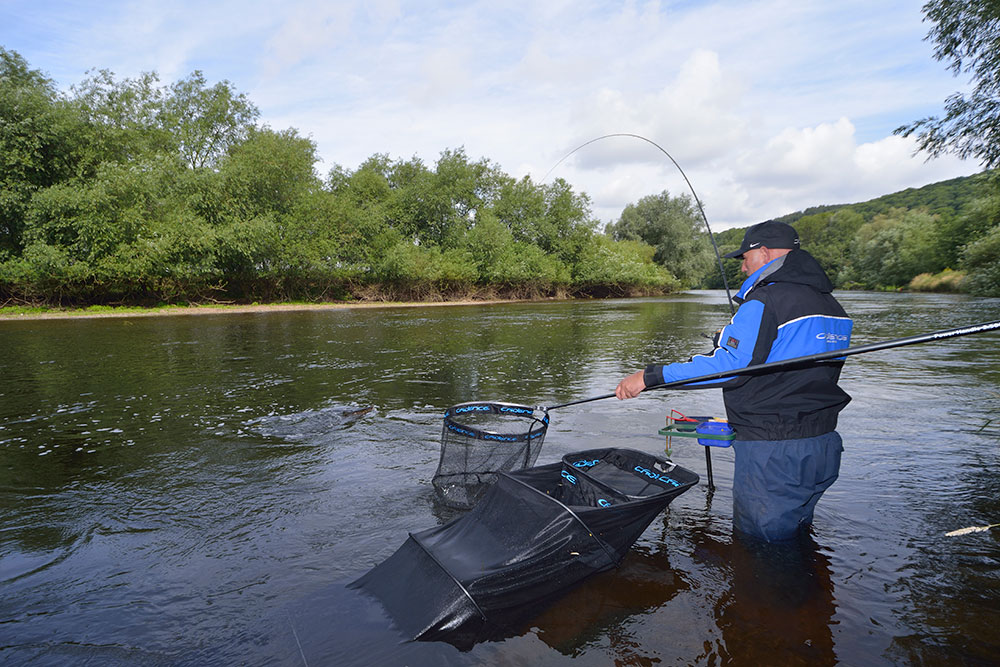
A controlled lean on the barbel started the process, and looking down the blank it was obvious how right the rod was for the task . After some smooth to and fro winding the fish was in front of me and almost ready.
Now the trick on a fast peg is to get the fish to come up above you before starting to use the net, that way you don’t have to fight the flow as well as the fish. The Cadence CR10 16ft Match pushed the barbel up just enough for me to get the net in place and after a couple of spectacular tail slaps it was up and into the landing net.
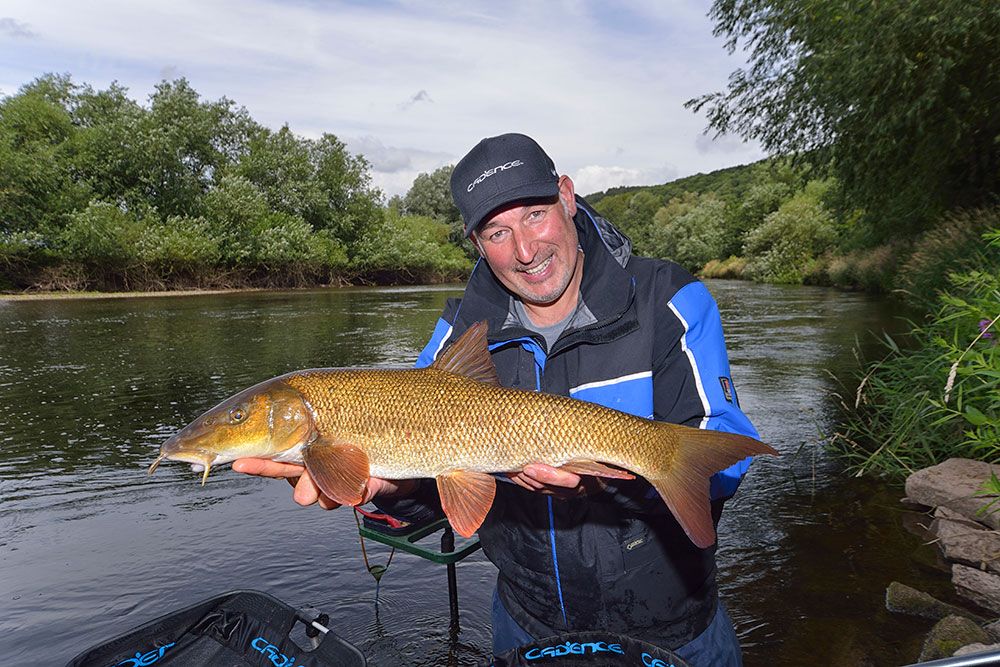
Catching barbel on a float must be the best test of any gear, it’s direct, man vs fish.
Several more barbel and chub followed and the day was made complete when I met the most entertaining David.
We were served tea and cake on the bank from a silver device I’m told was a teapot, and later was invited to his Salmon lodge for lunch. Whilst enjoying the meal we were treated to the best tales of the riverbank I could wish to hear. All surrounded by fifty years of angling history on the walls. Wonderful, I hope I get to do it again some time. I’ll bring some Grimsby fish, you do the chips David!
So, I’d done some pulling and the Cadence CR10 16ft #2 Match rod had shown me its muscle, but what about some more delicate fishing. Well that was in hand by way of a trip to the Trent at Fiskerton.
The day was bright and the river was extremely low and clear so it would possibly be a tricky mistress, and so it turned out.
I fished a peg about six down from the Clapper Gate, the main flow looked to be about three rod lengths out and the depth was around eight foot.
I set two rods up on the day, both Cadence CR10 #2 Match Rods, one 16ft and the other the 15ft version.
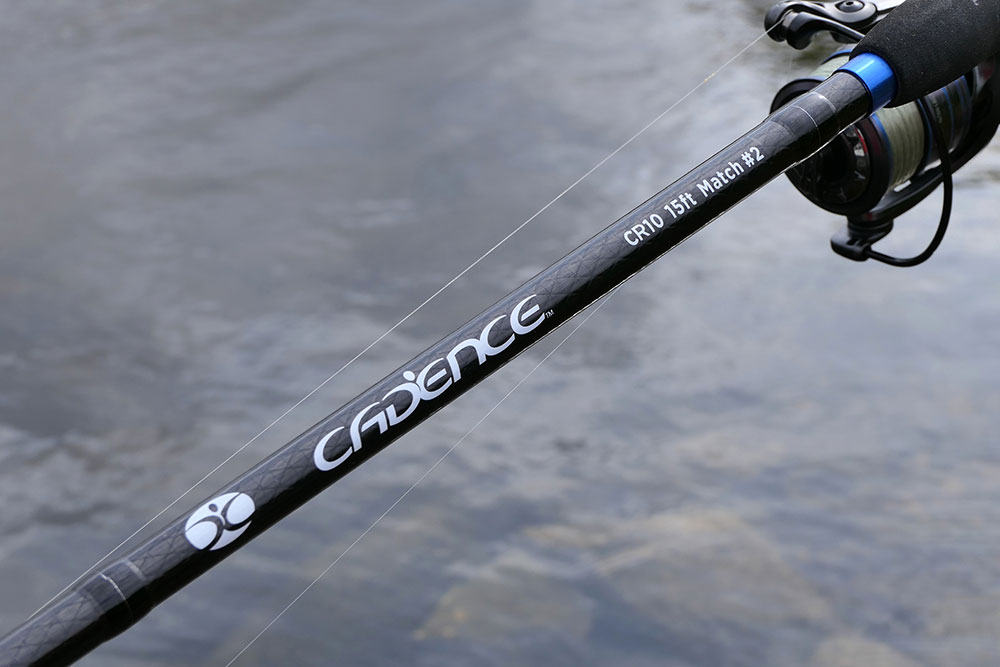
The 16 was to be fished with a 5 BB Drennan Stick and the 15 foot was rigged with a 3-gram bolo. Both CS10 4000 reels on the day were spooled with DH 3lb floating main line.
Now to get the best from a stick float at distance it pays to shot it up with a tight string of small shot. The float might say 5 BB but believe me you will have a world of trouble tangling up if you try to string out even number 6s. A patient setting of number 8s and a few 10s towards the hook is the way to go. In eight foot for example, the float might have one shot just underneath to secure the starting depth, then for the next three feet no shot at all, then two 8s followed by two more at three inch intervals followed by a string of single 8s at two inch intervals until two feet from the hook length where the 8s should be replaced with 10s.
It looks fussy but believe me you will get far fewer problems casting like this.
About casting, always cast the lead. The float is just a passenger and plays little part in the process of casting. The idea is to cast smoothly in a sweeping motion, getting the shot closest to the hook to land first, followed by the rest and last of all the float. Ideally try to get the rig to land parallel to the bank and that way it will be fishing almost instantly instead of having to be mended as it settles before staring its run down the peg.
Anyhow, hope that helps someone out there. Back to the Trent.
I started by fishing hemp and caster in the hope of perhaps fewer but better stamp roach (first mistake) after an hour I’d only managed a few small dace and the odd roach. The water was gin clear, so a real fine down and rethink was in order. The bolo was a real non-starter as the fish sat right off, anything but perfect presentation. So back to the stick float it was.
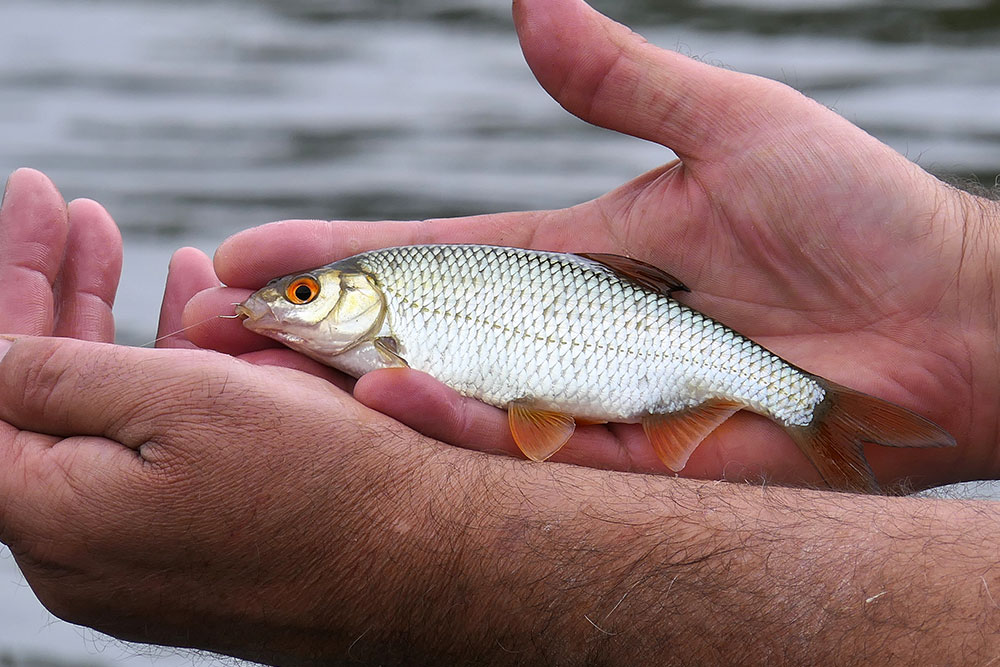
I took off the 20 and the 0.10mm hook length I’d started on and put on a 22 Drennan carbon match to an 0.8mm hook length. Now this on a pole is pretty standard roach gear but at three rods out and right down your peg on a 16 foot rod, it’s asking for a few issues.
But not a bit of it, the change to maggot and the lightening up of the terminal gear worked a real treat and soon enough I was catching properly.
The rod never let me down and showed just how versatile it is, not a crack off or straightened out hook all day. If you’re looking to invest in a long rod for the river, then look no further. For what your likely to pay for a comparable tool by some other companies, you could get almost three!
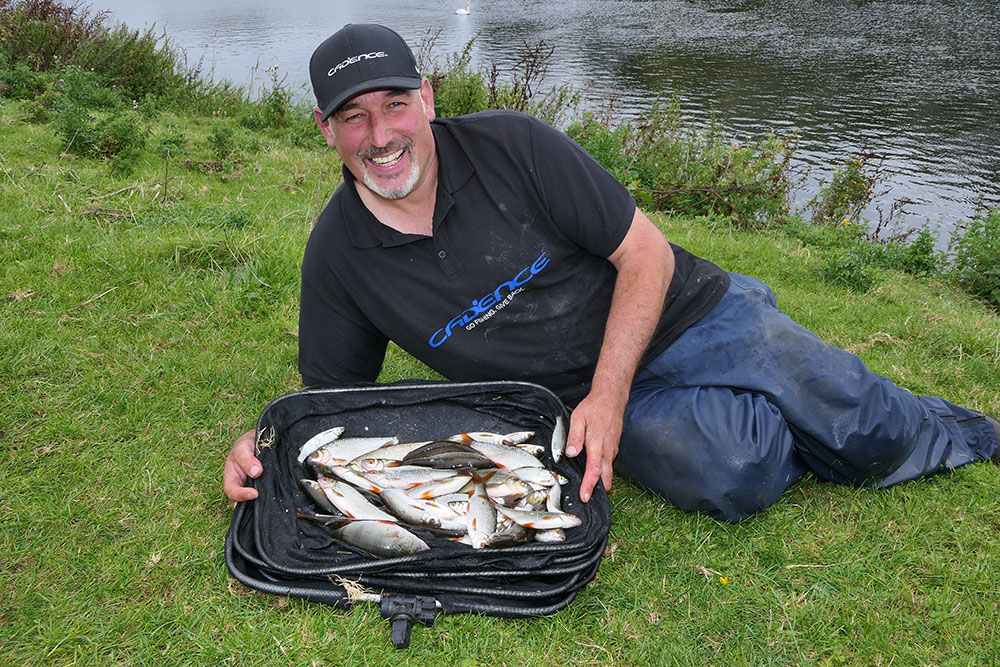
Cadence CR10 #2 15ft and 16ft Match Rod Review
